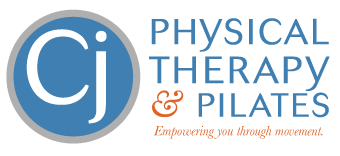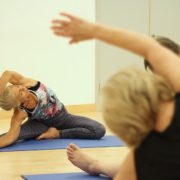How to Survive Flip-Flop Season Without Wrecking Your Feet
Flip-flop season is here – which means sunshine, beach days, and pool time. But it can also mean extra foot pain. And every summer around this time, we see an influx of people dealing with aching arches and stabbing heel pain – most commonly known as “plantar fasciitis”
What is Plantar Fasciitis?
Quite simply, it’s inflammation of your plantar fascia – the tissue that makes up the arch (bottom) of your foot. Your plantar fascia runs from the base of your heel, down the length of your foot, and into your toes. It’s responsible for both the mobility and stability of your foot, enabling you to propel yourself during walking and running. When you land on your foot, your arch falls or flattens – this is called pronation. In response, your foot then stiffens or supinates, providing the power to push off. If any part of this mechanism is not functioning properly, your plantar fascia can become stressed and overworked, leading to what we call “plantar fasciitis”.
How Do Flip-Flops Contribute?
Footwear can either “protect” your arch or cause it to overwork. Technically, if your foot mechanics are sound and the arch of your foot is strong and mobile, footwear should have a negligible impact on your plantar fascia. However, due to prolonged sitting and limited barefoot walking, the bottoms of our feet are not as conditioned as they should be. This is the real problem – not so much what you put on your feet. If you’re used to wearing supportive and cushioned shoes and then suddenly switch to flatter, less supportive flip-flops, it can shock your foot. And if you’re already prone to plantar fasciitis, it will flare up easily and quickly.
What Can You Do?
The good news is you don’t have to give up your favorite summer footwear entirely – you just need to be smart about how you wear them and how you care for your feet. Here are five simple tips and strategies to help you get through flip-flop season without completely wrecking your feet.
1. Choose Supportive Styles
Not all flip-flops are created equal. Those flat, flimsy styles you can pick up at the drugstore for five bucks? Probably not doing your feet any favors. They offer little to no support, and if your foot mechanics aren’t perfect, you’re asking a lot of your plantar fascia every time you take a step. A better choice is a flip-flop that gives you a bit of arch support and structure. Look for ones with a cushioned sole, some contouring through the arch, and even a slight heel cup to help stabilize your foot and keep it from sliding around. The right pair makes a big difference – a key factor for enjoying flip-flops pain-free.
2. Save Them for Short Distances
Even the most supportive flip-flop has its limits. They’re not designed for long walks, hours of standing, or sightseeing on vacation. Think of them like you would a slipper – something you wear for convenience or comfort in short bursts, not as your all-day shoe. If you’re going out for a full day of walking, or standing at an outdoor event, it’s better to switch to something more structured that supports your foot and ankle. Use your flip-flops strategically – around the house, to and from the pool, or for short errands. Giving your feet the right support when it matters most can go a long way in keeping them pain-free.
3. Strengthen Your Feet (and Your Core)
One of the best ways to prevent plantar fasciitis – or keep it from coming back – is to strengthen the muscles that support your arch and stabilize your entire lower body. Most people don’t think about exercising their feet, but they absolutely should. Working on things like toe strength, arch activation, ankle mobility, and balance helps condition your feet so they can handle different surfaces and demands. But don’t stop at your feet – your core matters too. The way your pelvis and deep abdominal muscles function has a direct impact on how forces move through your body when you walk. A weak or poorly functioning core can lead to poor movement patterns that put extra stress on your feet. Strengthening both your feet and your core can transform the way you move – and reduce the load on your plantar fascia dramatically.
4. Stretch and Massage Regularly
One of the most underrated things you can do to prevent or treat plantar fasciitis is to stretch and massage your feet on a regular basis. Tight calves, stiff ankles, and tension through the soles of your feet can all contribute to pain and inflammation. A few minutes of daily stretching – focusing on your calves and toes – combined with massage using your hands, a lacrosse ball, or a mobility tool, can make a huge difference. This kind of soft tissue work helps relieve tension, improves circulation, and keeps your plantar fascia mobile and healthy.
5. Don’t Ignore Persistent Pain – Treat It Early
If you’re already feeling pain in your heel or arch that just won’t go away, don’t wait around hoping it gets better on its own. Plantar fasciitis becomes harder to treat the longer it sticks around, and it can quickly go from annoying to chronic. When that happens, exercise and stretching might not be enough to get you out of pain – and that’s where regenerative therapy comes in. Shockwave therapy (EPAT) is a non-invasive treatment that uses high-energy sound waves to stimulate blood flow and break up tight, inflamed tissue. It helps jumpstart healing in a way that rest and stretching can’t. EMTT (Extracorporeal Magnetotransduction Therapy) takes this even further. It uses pulsed magnetic fields to penetrate deeper into tissues and promote healing at the cellular level. Together, shockwave and EMTT are incredibly effective at reducing pain, accelerating recovery, and allowing you to tolerate the exercises and movement you need to fully resolve your plantar fascitis.
Bottom Line
Flip-flops don’t have to be the enemy. But if you’re not taking care of your feet, wearing them can easily lead to pain and frustration. By choosing the right styles, wearing them in moderation, and taking the time to strengthen and care for your feet – you can enjoy them all summer long without paying the price. And if foot pain does creep in, don’t ignore it. Get the right help early. Treatments like shockwave and EMTT, combined with expert-guided movement and strengthening, could be exactly what you need to survive flip-flop season pain-free – and keep your feet happy long after summer ends.







